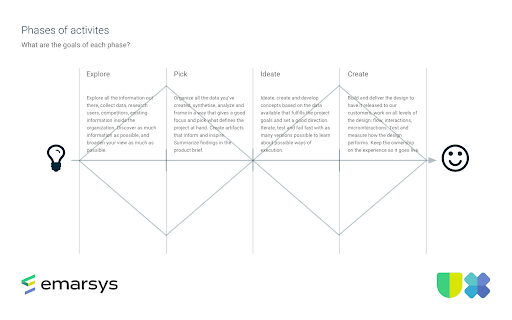Establishing a UX process
From the beginning, the UX team at Emarsys worked in cross-functional teams. I assumed that following the product manager’s process, while applying some basic practices like design critiques will be enough for team members, and they can come up with a flow most suitable for them. But over time I noticed some issues: teams spent too little effort on research and too much time on refining design, there were huge shifts in the solution approach even in late stages, and there was some confusion about when to best apply which methods.



The solution was to establish a common UX process or rather an approach that would guide UX people through a design project. I picked the Design Council’s Double Diamond model, as it seemed to fit our product teams the best. During adoption, I worked together with the team members to make sure it fits well with the different projects we needed to do. An important addition was to require a design brief in the middle that summarizes the research done and defines the context and constraints for the design solution to have a clearer definition of the design artifacts.
After we started to use it as an approach, it organized well the different UX activities and proved scalable to different-sized projects without forcing designers and researchers into a specific flow. Reviewing a project’s list of activities according to the process also helped to diagnose issues. The most significant impact was coming from the design brief, as it gave designers clear goals and what problems to focus on. After the introduction, there was still much to learn and improve on this approach, like how it fits into bigger product iterations and connections to development.
